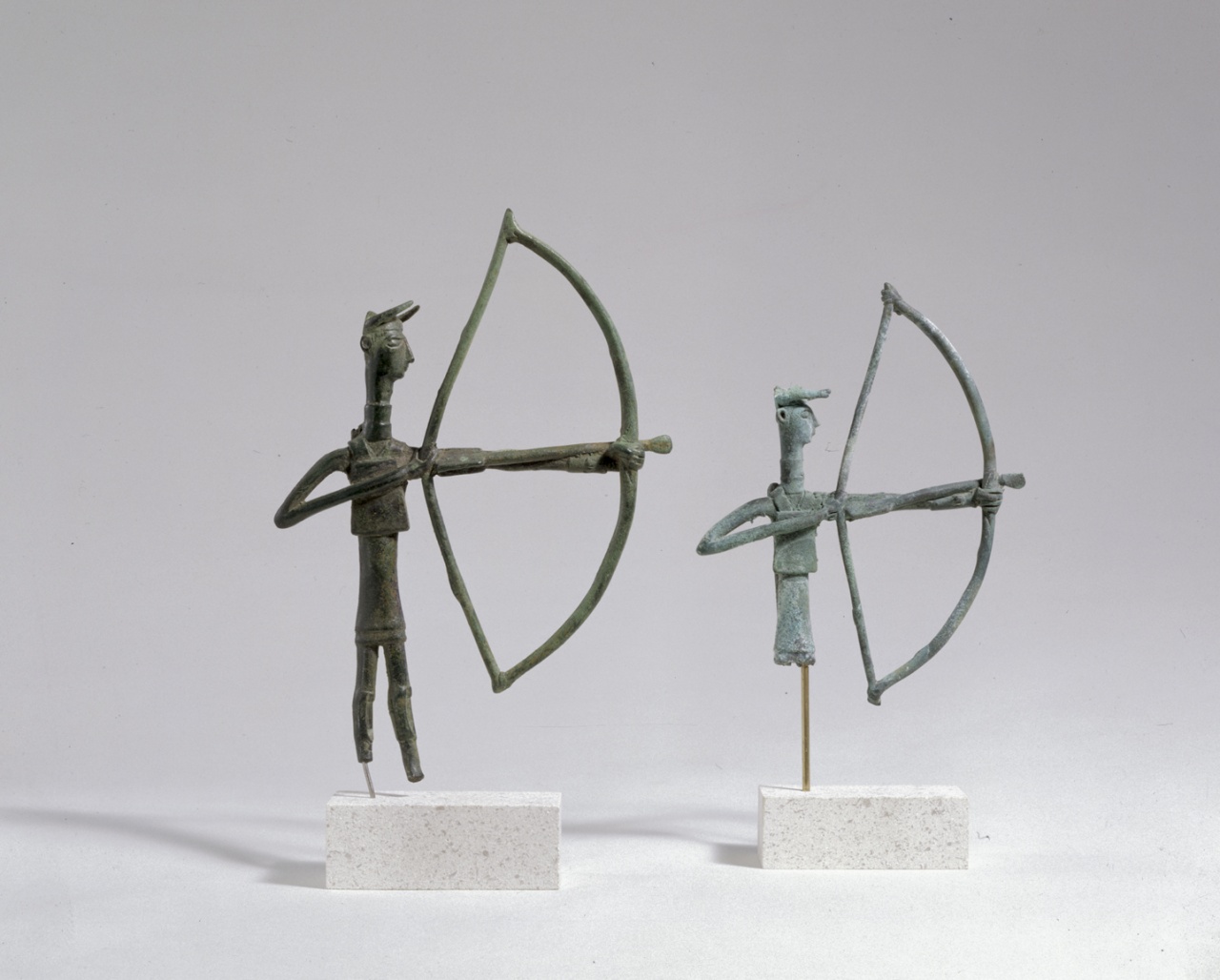
Bronze
H: 17.2 cm. W: 12 cm
Allegedly from Oliena (Nuoro)
Nuragic
9th-7th century B.C.
Solid-cast by the lost wax process, cold-worked and burnished.
Condition: patina smooth, green to dark olive green with speckles of reddish-brown and black, mainly copper oxide. Traces of earth deposit.
Missing left foot and end of right leg and foot.
This is a fighting archer, a warrior. What differentiates him and the companion piece cat. no. 180 from the hunters on a root, cat. no. 178, is their attire.
Their necks are are protected, encircled by two wide collars one above the other [1]. In front of their chests a rectangular protection, which we think must have been of leather, hangs down almost to their waists, though Lilliu [2] mentions that it might also have been of metal.
This archer wears a sort of knee-guard, another piece of equipment that characterizes warriors, and his left forearm is protected by a brassard. On his back, as with the archers, cat. no. 178, are a small case, a quiver and a long sword, though the case is not very well defined. All the above paraphernalia is to be found on the very fine warrior with sword and bow in Cagliari [3]. Worthy of notice is that two archer-warriors in Cagliari [4] show a triangular opening between the upper and lower right arm as they draw back the arrow with the string of the bow as does this example and its companion piece, cat. no. 180. The typology of their profiles bears some resemblance and they may be the product of the same workshop. Both comparisons come from Teti (Nuoro) and if the alleged provenance of our two examples, Oliena (Nuoro) is correct, their find-spots are less than 30 km apart, an additional indication.
1 Such protection for warriors is represented sometimes simply by two rings e.g. Lilliu, G.: Sculture della Sardegna nuragica (Verona, 1966), no. 21, pp. 72-73, nos. 24, 25, pp. 75-78, by a simple large ring and sometimes a protection formed of superimposed rings that may even extend down over the shoulders and collarbones, e.g. Lilliu no. 95, pp. 180-181. On this last, though it has no bearing on this entry, we would like to point out the extraordinary conical helmet, the central portion of which is composed of a wide band of herring-bone elements that appear to be a simplified version of the Mycenaean boar-tusk helmets, e.g. the helmeted heads of warriors in ivory, Athens National Museum (Karouzou, S.: National Museum. Illustrated Guide to the Museum [Athens, 1978], no. 2468, p. 22; Poursat, J.-C.: Catalogue des ivoires mycéniens du Musée National d'Athènes [Paris, 1977], no. 466/2055, p. 161 ill. pl. LI).
2 Lilliu, G.: op. cit., no. 11, p. 59.
3 Lilliu, G.: loc. cit.
4 Lilliu, G.: op. cit., no. 16, pp. 66-67; no. 20, pp. 71-72.